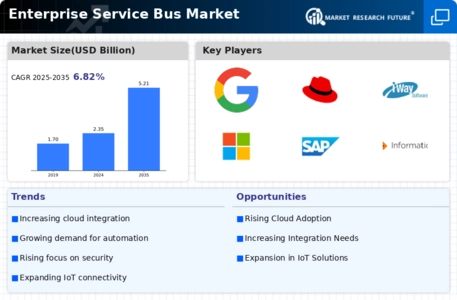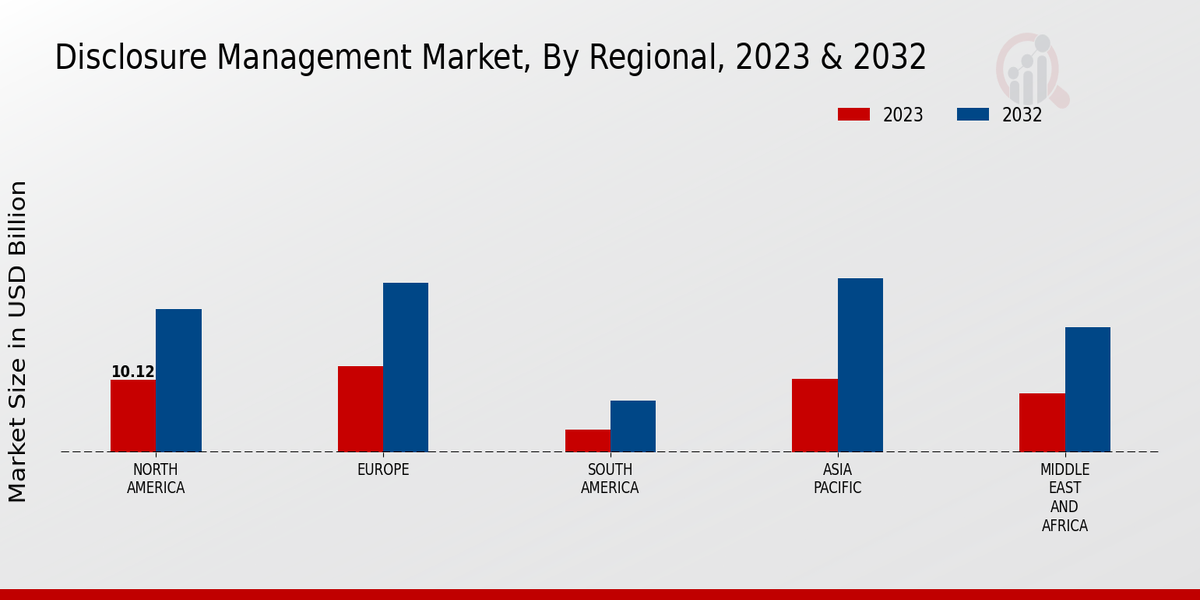Rise of Cloud Computing
The rise of cloud computing significantly influences the Global Enterprise Service Bus Market Industry, as organizations migrate their infrastructure to cloud-based environments. This transition necessitates robust integration solutions to ensure that various cloud services can communicate effectively with on-premises systems. The increasing adoption of hybrid cloud strategies further amplifies this need, as businesses strive for flexibility and scalability. By 2035, the market is expected to grow to 5.21 USD Billion, indicating a strong correlation between cloud adoption and the demand for enterprise service bus solutions. This growth underscores the importance of integration in a cloud-centric world.
Market Growth Visualization
The Global Enterprise Service Bus Market Industry is poised for substantial growth, with projections indicating a rise from 2.35 USD Billion in 2024 to 5.21 USD Billion by 2035. This growth trajectory reflects a compound annual growth rate of 7.51% from 2025 to 2035, highlighting the increasing importance of integration solutions in a rapidly evolving technological landscape. The market dynamics suggest a robust demand for enterprise service bus solutions as organizations seek to enhance their operational efficiency and adaptability.
Focus on Digital Transformation
The focus on digital transformation is a key driver of the Global Enterprise Service Bus Market Industry, as organizations strive to modernize their operations and enhance customer experiences. Digital transformation initiatives often require the integration of legacy systems with new technologies, necessitating the use of enterprise service buses. This integration allows for the seamless flow of information, enabling businesses to innovate and adapt to changing market conditions. As companies prioritize digital initiatives, the demand for enterprise service bus solutions is expected to rise, further propelling market growth in the coming years.
Need for Real-Time Data Processing
In the current digital landscape, the need for real-time data processing is becoming increasingly critical, driving the Global Enterprise Service Bus Market Industry forward. Organizations are recognizing that timely access to data can enhance decision-making and operational efficiency. As a result, enterprise service buses are being leveraged to facilitate real-time data integration and processing across various applications. This trend is expected to contribute to a compound annual growth rate of 7.51% from 2025 to 2035, as businesses invest in technologies that enable them to respond swiftly to market changes and customer demands.
Growing Demand for Integration Solutions
The Global Enterprise Service Bus Market Industry experiences a notable surge in demand for integration solutions as organizations increasingly seek to streamline their operations. This trend is driven by the necessity to connect disparate systems and applications, enabling seamless data flow across various platforms. As businesses expand globally, the need for efficient communication between services becomes paramount. The market is projected to reach 2.35 USD Billion in 2024, reflecting the growing reliance on integration technologies. This demand is likely to continue as enterprises recognize the value of agility and responsiveness in their operations.
Increased Regulatory Compliance Requirements
Increased regulatory compliance requirements are shaping the Global Enterprise Service Bus Market Industry, as organizations must adhere to stringent data protection and privacy laws. Compliance necessitates the integration of various systems to ensure that data is managed and reported accurately. Enterprise service buses play a crucial role in facilitating this integration, allowing businesses to maintain compliance while optimizing their operations. As regulatory frameworks evolve, the demand for solutions that can support compliance efforts is likely to grow, driving further investment in enterprise service bus technologies.























